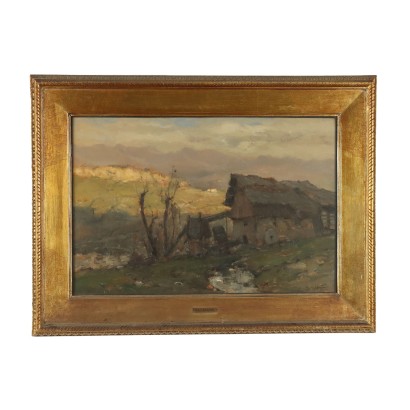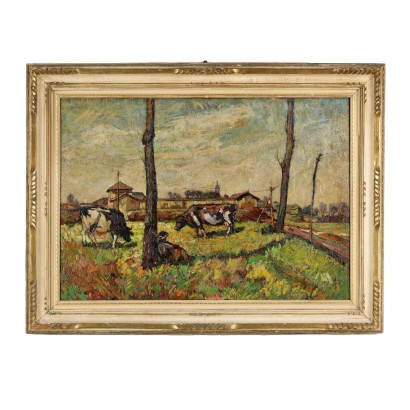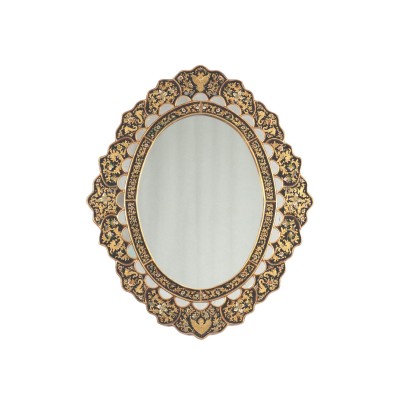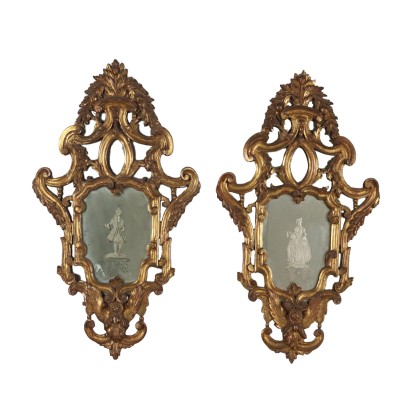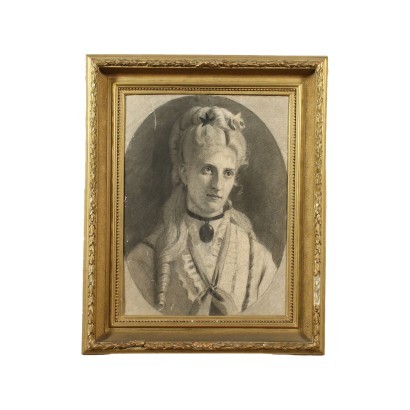V. Antonio Cargnel Oil on Canvas Italy XX Century - The Abandoned Mill Pofabbro 1928
Features
The Abandoned Mill Pofabbro 1928
Artist: Vittore Antonio Cargnel (1872-1931)
Artwork title: Il mulino abbandonato, Pofabbro
Age: 20th Century / 1901 - 2000
Subject: Landscape
Origin: Italy
Artistic technique: Painting
Technical specification: Oil on Canvas
Description : Il mulino abbandonato, Pofabbro
Oil painting on canvas. Signed lower right. Further signature, title and date on the back. Born in Venice in 1872, Vittore Antonio Cargnel enrolled at the Venice Academy, but his training took place above all in the studio of Cesare Laurenti, a well-known and esteemed painter with a symbolist tendency, and in the observation of the works of Ciardi, Favretto and Nono. He participated in the first three editions of the Venice Biennale, with works of character between the symbolist and the intimist; subsequently its production, mainly landscape, became particularly attentive to atmospheric variations. In 1910 he moved to Sacile, where he remained until the defeat of Caporetto, to then return to Milan where he remained until his death in 1931. The work presented here belongs to his last period, and offers a glimpse of Pofabbro, a hamlet of the Val Colvera, in the Carnic Prealps, where the artist spent his last years of life. The work is presented in a contemporary frame.
Product Condition:
Product in good condition, with small signs of wear.
Frame Size (cm):
Height: 74
Width: 97
Depth: 7
Artwork dimensions (cm):
Height: 51
Width: 75
Additional Information
Artist: Vittore Antonio Cargnel (1872-1931)
Born in Venice in 1872, in 1888 Vittore Antonio Cargnel enrolled at the Venice Academy, but his training took place above all in the studio of Cesare Laurenti, a well-known and esteemed painter with a symbolist tendency, and in the observation of the works of Ciardi, Favretto and Nono. In 1895 he participated in the I Biennale with a work, Averte faciem tuam, domine, a peccatis meis, which is clearly under the sign of Nono and Laurenti, and which was marked with the prize of the president of the jury, William Michael Rossetti. He also participated in the II and III Biennials, always with works of character between the symbolist and the intimist, while in 1901 he was present at the Salon in Paris, in St. Petersburg and in Leipzig, and finally at the VIII International Exhibition in Munich, with landscape paintings in which he was defining a painting very attentive to atmospheric vibration. In 1900 he moved near Treviso, where he built his own bell foundry, in 1910 another transfer, this time to Sacile, where he would stop until defeat of Caporetto.In 1924 he became an honorary member of the Royal Academy of Fine Arts of Brera. In the meantime, his exhibition activity continued, which saw significant stages in Italy and Europe. Cargnel died in Milan in 1931. Several retrospectives were dedicated to him throughout the twentieth century.
Age: 20th Century / 1901 - 2000
20th Century / 1901 - 2000
Subject: Landscape
Artistic technique: Painting
La pittura è l'arte che consiste nell'applicare dei pigmenti a un supporto come la carta, la tela, la seta, la ceramica, il legno, il vetro o un muro. Essendo i pigmenti essenzialmente solidi, è necessario utilizzare un legante, che li porti a uno stadio liquido, più fluido o più denso, e un collante, che permetta l'adesione duratura al supporto. Chi dipinge è detto pittore o pittrice. Il risultato è un'immagine che, a seconda delle intenzioni dell'autore, esprime la sua percezione del mondo o una libera associazione di forme o un qualsiasi altro significato, a seconda della sua creatività, del suo gusto estetico e di quello della società di cui fa parte.
Technical specification: Oil on Canvas
The oil painting is a painting technique using powder pigments mixed with bases in inert and oils. Other customers have searched:



